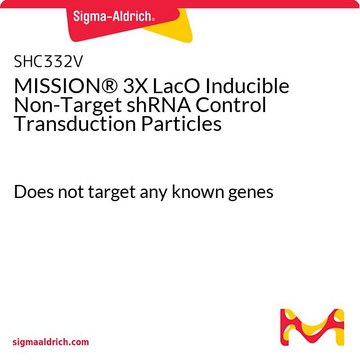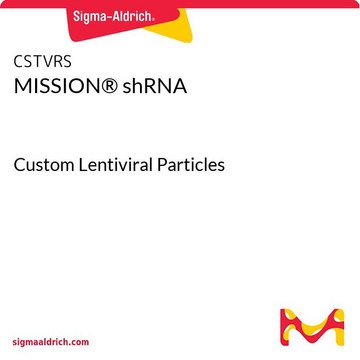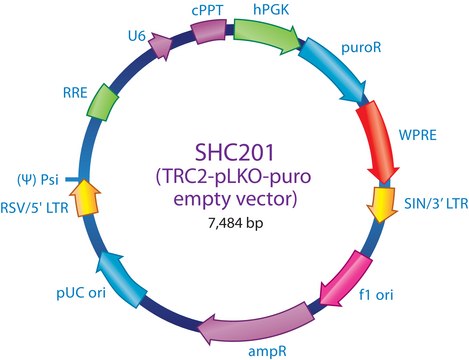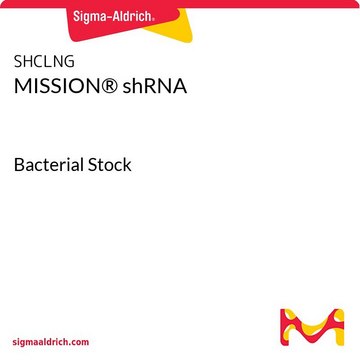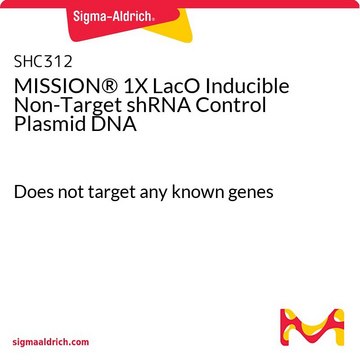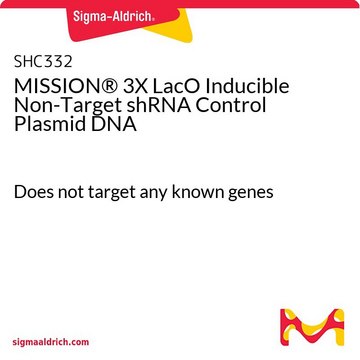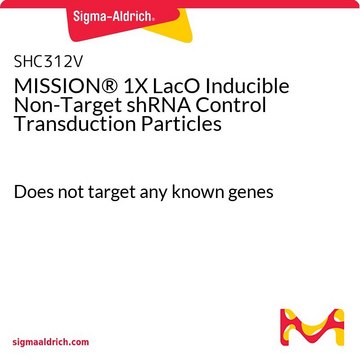推荐产品
相关类别
1 of 4
此商品 | SHC312 | SHC332 | SHC332V |
|---|---|---|---|
| product line MISSION® | product line MISSION® | product line MISSION® | product line MISSION® |
| shipped in dry ice | shipped in dry ice | shipped in dry ice | shipped in - |
| storage temp. −70°C | storage temp. −20°C | storage temp. −20°C | storage temp. - |
| Quality Level 100 | Quality Level 200 | Quality Level 200 | Quality Level 100, 200 |
一般描述
The pLKO vector has been redesigned to contain a LacI (repressor) and a modified human U6 shRNA promoter with LacO (operator) sequences. In the absence of IPTG (isopropyl-Β-D-thio-galactoside), an analogue of lactose, LacI binds to LacO preventing expression of the shRNA. When IPTG is present, the allosteric LacI repressor changes conformation, releasing itself from lacO modified human U6 promoter, and subsequently allows expression of the shRNA.
The MISSION 1x LacO Inducible Non-Target shRNA Control Transduction Particles contain an shRNA insert that does not target any known genes, making it useful as a negative control in experiments using the MISSION inducible shRNA library clones. This allows one to examine the effect of transfection of a short-hairpin on gene expression and interpret the knockdown effect seen with shRNA clones. Ampicillin and puromycin antibiotic resistance genes provide selection in bacterial or mammalian cells respectively. In addition, self-inactivating replication incompetent viral particles can be produced in packaging cells (HEK293T) by co-transfection with compatible packaging plasmids. 200uL of 106 TU/ml (via p24 titering assay) lentiviral particles are provided as frozen stock.
When conducting experiments using MISSION® shRNA clones, the proper controls should be a key element of your experimental design to allow for accurate interpretation of knockdown results.
应用
法律信息
储存分类代码
12 - Non Combustible Liquids
WGK
WGK 3
闪点(°F)
Not applicable
闪点(°C)
Not applicable
法规信息
商品
RNAi Consortium (TRC): Collaborative effort among academic labs and biotech/pharma institutes advancing RNA interference research.
相关内容
Explore the benefits of IPTG-inducible vectors through performance data. These vectors offer regulated expression, which is important when studying essential and lethal genes.
我们的科学家团队拥有各种研究领域经验,包括生命科学、材料科学、化学合成、色谱、分析及许多其他领域.
联系客户支持